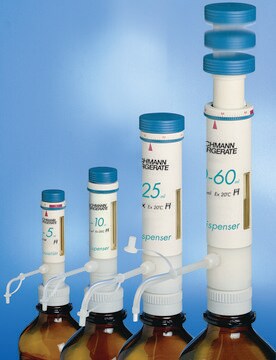Z359629
Bright-Line™ Hemacytometer
supplied with two cover slips
Synonim(y):
hemacytometers
About This Item
Polecane produkty
Materiały
colorless
glass
sterylność
non-sterile
dołki
2
Opis ogólny
The ruled surface is 0.1mm below the cover glass, limiting the volume of blood or fluid over a square mm at 0.1cu.mm and over each of 400 squares (within the central square mm) to 0.00025 cu. mm. Contact of the flat, polished cover glass surfaces with cover glass supports produces an exact volume of fluid over the counting area. The difference in surface tension characteristics between the metallic surface on the chamber and the polished cover glass assures smooth capillarity for precise loading and more even cell distribution.
Replacement cover slips sold separately: Z375357
Zastosowanie
Informacje prawne
polecane
Certyfikaty analizy (CoA)
Poszukaj Certyfikaty analizy (CoA), wpisując numer partii/serii produktów. Numery serii i partii można znaleźć na etykiecie produktu po słowach „seria” lub „partia”.
Masz już ten produkt?
Dokumenty związane z niedawno zakupionymi produktami zostały zamieszczone w Bibliotece dokumentów.
Klienci oglądali również te produkty
Produkty
Cell based assays for cell proliferation (BrdU, MTT, WST1), cell viability and cytotoxicity experiments for applications in cancer, neuroscience and stem cell research.
Testy komórkowe do proliferacji komórek (BrdU, MTT, WST1), żywotności komórek i eksperymentów cytotoksyczności do zastosowań w badaniach nad rakiem, neuronauką i komórkami macierzystymi.
Protokoły
Protokół hodowli komórkowej do zamrażania komórek o wysokiej żywotności przy użyciu odczynników do kriokonserwacji, takich jak DMSO. Bezpłatny podręcznik do pobrania.
Cell culture protocol for high cell viability freezing using cryopreservation reagents like DMSO. Free handbook download.
Nasz zespół naukowców ma doświadczenie we wszystkich obszarach badań, w tym w naukach przyrodniczych, materiałoznawstwie, syntezie chemicznej, chromatografii, analityce i wielu innych dziedzinach.
Skontaktuj się z zespołem ds. pomocy technicznej











